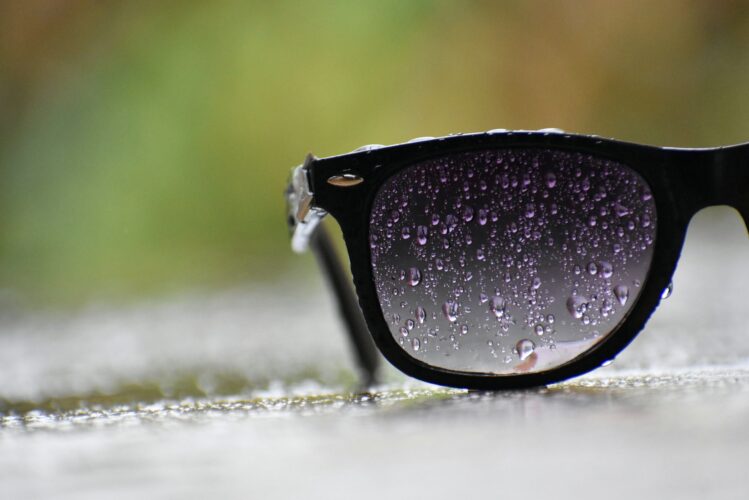Transition lenses—also known as photochromic lenses—have become more popular in recent years. These lenses darken when exposed to sunlight and lighten under the shade. Many people, especially the older generation, invest in transition lenses due to the prevalence of eye illnesses, increased public awareness of eye health, and the emerging features added to these lenses. Because of this, Yahoo Finance reports that the photochromic lenses market size is estimated to reach $8,992.46 million by 2027, with a compound annual growth rate of 7.6% beginning in 2022. Given this, you may be interested in getting transition lenses for your next pair of glasses.
However, if this isn’t enough to convince you to upgrade, here are some pros and cons that may help you decide.
Pros
They protect your eyes
Transition lenses were made to protect the eyes from harmful UVA and UVB rays. Prolonged exposure to both types of rays can lead to cataract formation, making your eyesight worse. Cancers of the eyelid—like basal cell carcinoma—are also often linked to UV exposure.
Aside from UV rays, these lenses shield your eyes from blue light. Long-time exposure to this light can cause a worsening of visual fatigue and nearsightedness. The Light Intelligent Lenses by Transitions protect you against blue light outdoors (from the sun) and indoors (from electronic devices and light bulbs). Therefore, transition lenses are perfect for those who prioritize eye health.
They’re convenient
Carrying two pairs of glasses, specifically eyeglasses, and sunglasses, is troublesome because they take up space in your bag—and it can be easy to misplace one or the other.
With transition lenses, you don’t have to bring two glasses whenever you go out. Transition lenses quickly darken in sunlight and fade back to clear when indoors, making them eyeglasses and sunglasses in one. This is possible because you can buy prescription and non-prescription glasses with transition lenses. Get transition lenses if you’re the type who likes convenience and often spends time outdoors.
They’re still fashionable
If you want transition lenses for your glasses, you won’t need to compromise on style. Many top eyewear brands offer the option to make your lenses photochromic. Some of Ray-Ban’s iconic eyeglasses offer transition lenses, so you can find a fashionable frame that will suit your face shape and provide a timeless look. Models like the Clubmaster Optics or Aviator Optics give you a stylish look while providing the benefits of transition lenses.
If you’re concerned about costs, there are still ways to find stylish frames with transition lenses. Zeelool offers a wide range of fashionable frames that won’t break the bank. Their Celisa and Lekka frames can give a cool edge to your look while protecting your eyes with transition lenses. Considering that transition lenses can be an added cost, budget-friendly frames allow you to keep the price of your glasses low.
Cons
They’re ineffective inside cars
Some people like wearing sunglasses while driving to prevent glare from the sun. Unfortunately, transition lenses don’t work inside vehicles. Car windshields already prevent UV exposure, so transition lenses won’t darken if you’re driving or sitting in the passenger seat. If you drive often, then bringing and wearing ordinary sunglasses may suit you better.
However, there is one special type of transition lens that turns dark despite being inside the car: Drivewear Lenses. Glasses Gallery offers these lenses for their eyewear, though keep in mind that they may be more expensive than regular transition lenses.
They take longer to react in winter
Transition lenses’ ability to automatically darken depends on their exposure to sunlight. If it’s bright outside, yet sunlight is lacking, it will take longer to react. This is particularly applicable if you live in an area where it’s often gloomy or has a colder climate, as you will have to endure the brightness outside for a short while as the lenses adjust.
Still, there’s an upcoming technology that can solve this problem. ShadeSnap is an eyewear startup that will soon offer glasses that will allow you to switch between eyeglasses and sunglasses with a touch of a button. The founders created this product because they were frustrated by the time it can take for transition lenses to darken completely.
They lack polarization
Many people wear sunglasses with polarized lenses to shield the eyes from harsh glares. The anti-reflective coating protects wearers from UV rays from the sun or light reflected off surfaces like water or snow.
Transition lenses can block out light as well, but they don’t have polarization. They won’t be as effective as polarized lenses if you want more protection against glare. If you’re someone who does a lot of activities outdoors, such as sports or hiking, you may fare better with polarized sunglasses instead of transition lenses.
While transition lenses have some cons, their pros ensure better eye health and convenience. Hopefully, this guide helped you decide if you should get transition lenses for your next pair of glasses!
Check out The Fact Source for more posts on life, science facts, history trivia, cool geography, and more.
Image credit: Asif Hussein / Pexels


